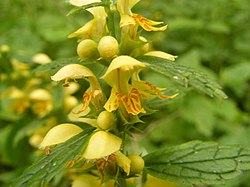Ancient woodland


Ancient woodland is the name used in the United Kingdom for woodland which has existed continuously since 1600 or before in England and Wales (or 1750 in Scotland). Before those dates, planting of new woodland was uncommon, so a wood present in 1600 was likely to have developed naturally.[1] The American name for these forests is "old growth forest".
For many species of animal and plant, ancient woodland sites provide the only habitat. For many others, conditions on these sites are much more suitable than those on other sites. Ancient woodland in the UK, like rainforest in the tropics, is home to rare and threatened species, more than any other UK habitat. For these reasons ancient woodland is often described as an irreplaceable resource, or 'critical natural capital'.[2]
Ancient woodland is formally defined on maps by Natural England and equivalent bodies. Many ancient woodlands have legal protection, but an ancient woodland is not automatically protected.
Examples
- Cannock Chase, Staffs
- Charnwood Forest, Leicestershire
- Cherry Tree Wood, London
- Edford Woods and Meadows, Somerset
- Epping Forest, Essex
- Forest of Dean West Gloucestershire
- Foxley Wood, Norfolk
- Hatfield Forest, Essex
- Highgate Wood, London
- Holt Heath, Dorset
- New Forest, Hampshire
- Parkhurst Forest, Isle of Wight
- Queen's Wood, London
- Savernake forest, Wiltshire
- Sherwood Forest, Nottinghamshire
- Wentwood, Monmouthshire
- Windsor Great Park, Berkshire
- Wyre Forest bordering Shropshire and Worcestershire
- Yardley Chase, Northants
Ancient Woodland Media
Ancient woodland on Inchmahome island in Scotland
Blossom of lesser celandine (Ficaria verna)
Penduculate oak trees in Wistman's Wood.
Close-up of the yellow archangel flowers
Anemonoides nemorosa, the wood anemone
Ancient pollarded beech tree. Epping Forest, Essex, England
References
- ↑ What is ancient woodland? Archived 2013-09-09 at the Wayback Machine The Woodland Trust website
- ↑ "Forestry Commission Wales Reclaiming our Forgotten Inheritance (RoFI) project". Archived from the original on 2012-02-18. Retrieved 2013-08-23.
Other websites
- Ancient Tree Guides by the Woodland Trust Archived 2013-09-11 at the Wayback Machine







